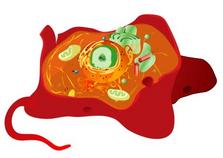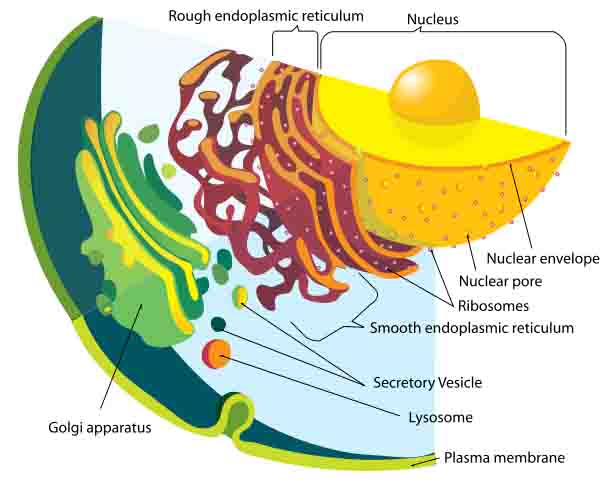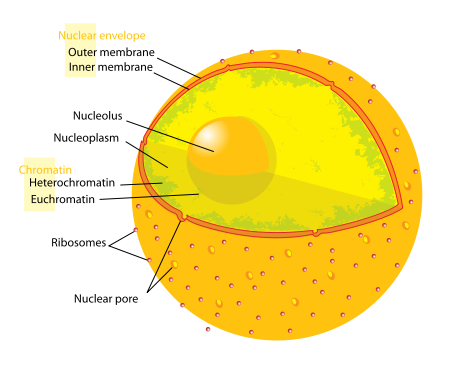 | ||||
Animal Cell Structures, Functions & Diagrams - P2
- Vesicles: These small shipping organelles are like membrane bubbles that break off from the plasma membrane or from membrane-bound organelles and ship materials into, out of or around within the cell.
- Lysosomes: This special type of vesicle contains lysozyme—an enzyme that can break down organic materials. Lysosomes are produced by the Golgi apparatus and function in cellular digestion and recycling of particles and broken organelles.
SPO VIRTUAL CLASSROOMS
VIDEO: Watching movement of wax blobs in a lava lamp is an excellent way to help students understand how organelles of the eukaryotic endomembrane system ship materials into, out of and around within the cell.
PAGE 2 < Back to Page 1
Generic eukaryotic animal cell. See Page 1 for a labeled illustration. Click here for a practice assignment on identifying the parts of an animal cell.
- Peroxisomes: These vesicles, derived from the endoplasmic reticulum, contain enzymes, such as oxidase and catalase, that break down dangerous free radicals and hydrogen peroxide. Peroxisomes are required by any cell that uses aerobic respiration (oxygen to extract energy from food).
- Golgi body: In addition to making lysosomes, this organelle coordinates the packaging and shipment of materials out of the cell.
Continued ... Go to PAGE 3 >
Page last updated: 1/2016
Membranous
Organelles of
Animal Cells
All eukaryotic membranous organelles are enclosed by the same type of material as the plasma membrane is made of (phospholipids & proteins). So these organelles can use pices of their membrane to ship materials to each other, via the endomembrane system. Transport of materials can happen when a piece of a membrane breaks off from one organelle, travels with its cargo, and then fuses with a different membrane-bound organelle.
Material can also enter (endocytosis) or exit (exocytosis) the cell via this method.
Eukaryotic Endomembrane System
- Nucleus: Often the largest and most visible organelle in an animal cell, the nucleus is bound by a double-layer nuclear membrane and contains the genetic material (the genome) of the cell.
- Endoplasmic reticulum: A network of hollow tubes, called the endoplasmic reticulum (ER), extends off the nuclear membrane. There are two types of ER. One is rough endoplasmic reticulum, which is studded with ribosomes and involved in making and shipping proteins. Ribosomes are the protein making machinery of the cell, and cells contain many thousands of these tiny nonmembrane-bound organelles. Some ribosomes are attached to the rough ER, others float freely in the cell. The other type of ER, called smooth endoplasmic reticulum, does not have ribosomes, and is involved in the synthesis and transport of lipids.
It is also filled with fluid, called nucleoplasm and may contain one or more nucleoli (regions where ribonucleic acid RNA is synthesized).
You have FREE access to a large collection of materials used in a college-level introductory biology course. The Virtual Biology Classroom provides a wide range of free educational resources including PowerPoint Lectures, Study Guides, Review Questions & Practice Test Questions.




